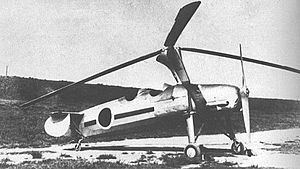Top speed 165 km/h Length 6.68 m | Wingspan 12 m First flight May 26, 1941 | |
Il2 1946 kayaba ka 1 autogyro
The Kayaba Ka-1 was a Japanese autogyro, seeing service during World War II.
Contents
- Il2 1946 kayaba ka 1 autogyro
- Mini r c autogyro kayaba ka 1 indoor flying in madrid
- Design and development
- Operational history
- Specifications Ka 1
- References
Mini r c autogyro kayaba ka 1 indoor flying in madrid
Design and development
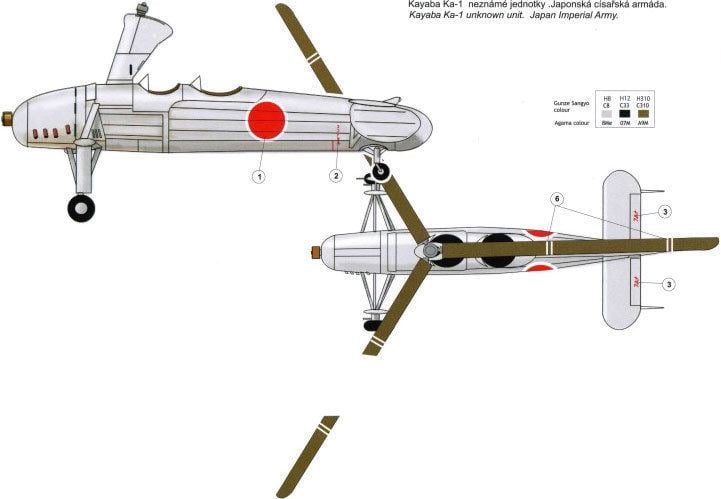
The Imperial Japanese Army developed the Ka-1 autogyro for reconnaissance, artillery-spotting, and anti-submarine uses. The Ka-1 was based on an American design, the Kellett KD-1A, which had been imported to Japan in 1939, but which was damaged beyond repair shortly after arrival. The Kayaba Industry was then asked by the Army First to develop a similar machine, and the first prototype was flying on 26 May 1941. The craft was initially developed for use as an observation platform and for artillery spotting duties. The Japanese Army liked the craft's short (30m) take-off span, and its low maintenance requirements. The production began in 1941 and the first autogyros were assigned to artillery units for artillery spotting. These carried two crewmen: a pilot and a spotter. The prototype, Ka-1 was essentially the repaired Kellett KD-1A. The Ka-1 had a change of the engine to the 240 hp Argus As 10c. But only about 20 Ka-1 were made. The Ka-1 employed similar aspects to the Focke-Wulf Fw 61, which was first flown in 1936. The production of the remainder were all Ka-2. The Ka-2 returned to the same Jacobs L-4MA-7 engine as the Kellett KD-1. Total Ka-1 and Ka-2 production was erroneously stated as approximately 240 by. During the production, a shortage of critical components for rotor and engine resulted in severe delivery delays. A total of 98 Ka-1 and Ka-2 airframes were produced until end of war, of them 12 was destroyed by exposure before being delivered to army and about 30 never had an engine installed, leaving about 50 delivered to IJA and about 30 actually deployed.
Operational history
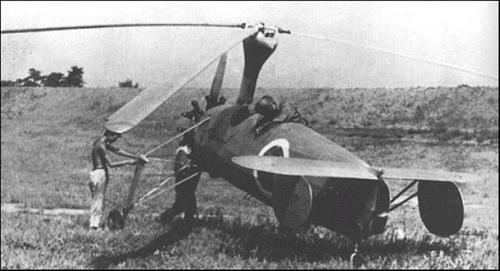
The repaired Kellett KD-1A first took off from Tamagawa Airfield in May 26, 1941. In the following Army trials, performance was deemed excellent. Originally, it was planned to send the Ka-1 to spot for the artillery units based in mainland China, but the change of the course of war in that theater rendered those plans meaningless. Instead, a few Ka-1 were sent to the Philippines to perform the duties of liaison aircraft as replacements for the Kokusai Ki-76. After some time the Japanese Army finally decided on the best use of these unique aircraft, and the majority of Ka-1 and Ka-2 were pressed into service as anti-submarine patrol aircraft. Pilots' training for this specialty started in July 1943 and the first batch of 10 pilots graduated flight school in February 1944; followed by another batch of 40 pilots in September 1944.
Originally, the plan was to deploy the Ka-1/Ka-2 from 2D-class cargo ships to spot enemy submarines, but these ships turned out to be too cramped for operations; therefore the Ka-1/Ka-2 unit was assigned to the Army-operated escort carrier Akitsu Maru from August 1944 until her sinking in November 1944. From 17 January 1945 ASW patrols were resumed from an airstrip on Iki Island with their maintenance base being located at Gannosu Airfield in Fukuoka prefecture. ASW patrols also started from May 1945 from Izuhara airfield on Tsushima Island. These missions helped to protect one of the last operational Japanese sea lanes between the ports of Fukuoka and Pusan. Eventually USA carrier-based aircraft began to appear even in the Tsushima Strait, so in June 1945 the Ka-1/Ka-2 units were relocated to Nanao base on the Noto Peninsula (in the Sea of Japan) and operated from there until the end of the war. The Ka-1/Ka-2 did not directly sink any submarines during the war, however, they were well regarded as to performing their duty which was issuing submarine warnings.
Specifications (Ka-1)
Data from Japanese Aircraft of the Pacific War
General characteristics
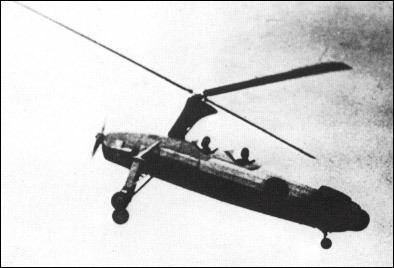
Performance
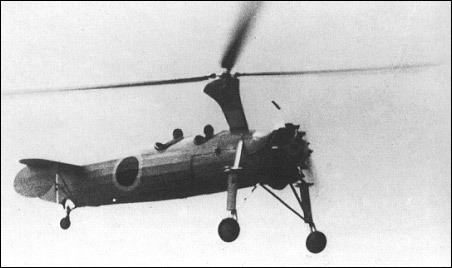
Armament
